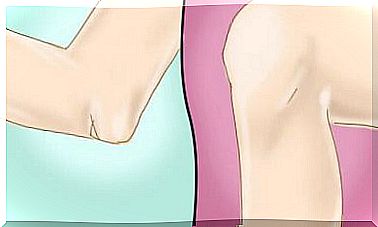Brimonidina: What Is It For And How Is It Used?

The active ingredient of brimonidine serves to reduce intraocular pressure (IOP). It is therefore indicated in patients with ocular hypertension and in the treatment of open-angle glaucoma.
Glaucoma is the main risk factor linked to ocular hypertension; when a very high tension inside the eye is reached, the risk is to damage the optic nerve with a serious and permanent loss of vision.
How does brimonidine work?
Brimonidine belongs to the category of drugs called alpha adrenergic agonists ; it works by reducing the amount of fluid inside the eye.
Adrenergic agonists are defined as substances that have similar or identical effects to adrenaline. They are also known as sympathetic mimetics, because they work by mimicking the sympathetic nervous system.
The sympathetic nervous system is part of the autonomic nervous system and is responsible for many involuntary reactions such as:
- Dilation of the pupil.
- The reduction in saliva production.
- The increase in heart rate.
- The inhibition of the activities of the organs of the digestive system.
How to use?

It comes as eye drops, to be administered by the ophthalmic route. In adults and the elderly the recommended dose is one drop per eye twice a day, with an interval of approximately 12 hours between the two administrations.
Instructions and tips for use:
The eye drops should not be used if the safety cap on the cap is already open. It is important to wash your hands thoroughly before opening the bottle.
- To apply it, tilt your head looking towards the ceiling.
- Pull the lower lid gently downwards.
- Press the bottle and drop one drop of eye drops into each eye.
- Close your eyes.
- For optimal use and to avoid possible systemic absorption, press the tear sac for one minute immediately after applying the drop. If more than one ophthalmic drug is used, instillations should be performed with an interval of 5-15 minutes between each drug.
- Once the drug is opened, it must be used within 28 days.
What are the adverse effects?
The most frequently reported side effects are:
- Dry mouth.
- Conjunctival hyperemia (red eyes).
- Burning and itchy eyes.
- Headache.
- Drowsiness.
These are mostly transitory effects, which do not reach such a severity as to require a suspension of the treatment.
Among the less frequent effects we find:
- Pigmentation of the cornea.
- Photophobia or sensitivity to light.
- Eyelid edema.
- Asthenia.
- In rare cases, palpitations or arrhythmia.

If the following symptoms occur, it is best to contact your doctor immediately:
- Skin rashes.
- Difficulty in breathing.
- Fainting.
- Dizziness.
- Nausea.
What are the contraindications?
Brimonidine treatment is contraindicated in case of:
- Hypersensitivity to the active substance or to one of its excipients.
- Babies and children under two years old.
- Patients on therapy with monoamine oxidase inhibitor (MAOI) antidepressant drugs.
- Patients treated with antidepressants with effects on noradrenergic transmission (e.g. tricyclics).
Can brimonidine be used in pregnancy?
Animal studies indicate the absence of teratogenic effects in this drug. Other research, however, conducted in rabbits – in which brimonidine levels were found to be higher than those achieved during treatment with eye drops – showed less postnatal growth.
Ultimately, the safety of using this drug for pregnant women is not confirmed to date. Therefore, it is not recommended.
It can only be assessed whether the real benefit to the mother justifies the risk to the fetus. Its use is also not recommended during the lactation period.









